Scaling Mountains
Santa Barbara’s Rock Climbing History
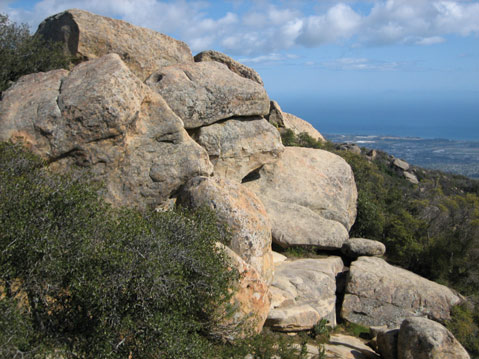
When I turned 50, I discovered the sport of rock climbing. It has changed my outlook on life — and my appearance. Two years later, my muscles are rock solid (I can do two-finger pull-ups), and I am 10 pounds lighter. My mother took up the sport at age 84 after my father died. She found it exhilarating and fulfilling.
Climbing is a full-body activity where each ascent uses different muscle groups; yoga plays a big part in one’s success in completing a climb when extra strength and flexibility are needed to complete different movements. Climbing also requires analytical skills, such as when you’re plotting a course up a rock face. There is a social aspect of the sport, too — you work as a group to solve a problem and share the passion together. But progressing to a higher level depends on how much time you put into it. The natural high comes when you achieve success after (sometimes) 50 tries. There is great joy when you finally complete a climb.
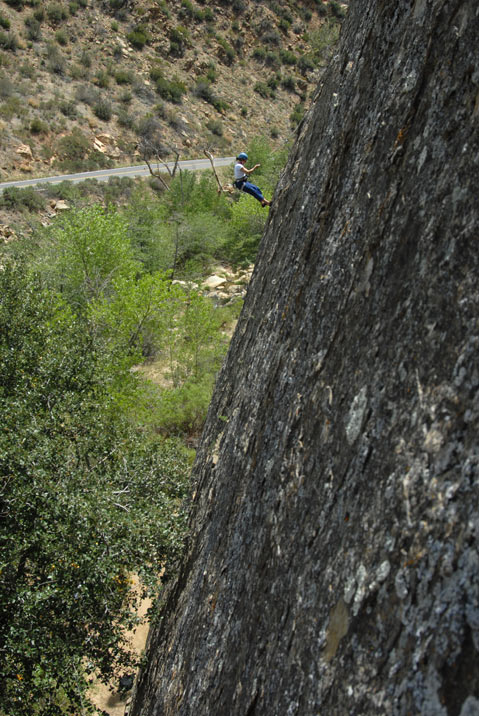
During the 1950s, climber Herbert Rickert explored the Santa Barbara hillsides, which was no easy feat, considering overgrowth of the uncharted areas and the inadequate gear of the time.
Area icon and Patagonia owner Yvon Chouinard and friends climbed the Santa Barbara mountains, as well as the uncharted rock faces of Yosemite. These “dirtbag” climbers of the 1960s lived in their cars, camped, and survived any way they could for the love of adventure. As climbing became more popular, an evolution in gear and equipment led to an era of “clean climbing” (no damage to the rock) by replacing pitons (metal spikes) with removable wedges.
In the 1970s, Doug Hsu and Chuck Fitch explored new bouldering areas, and, by the ’80s, bouldering had become popular with many climbers. Dave Griffin, Pat Briggs, Tony Vecchio, and others started ascending the large rock faces — such as Gibraltar — and consulting with each other about the difficult bouldering problems.
In the 1990s, climber/guidebook writer Steve Edwards moved to Santa Barbara for graduate school. Edwards and his brother, who was an undergraduate at UCSB, opened The Shop. The Shop was the climbing enthusiast hub and is where organized climbing competitions were planned at UCSB. These competitions drew screaming large crowds; the store became a place where you could train, watch movies, and drink beer. It was one of the only places locally to buy climbing gear (Mountain Air Sports was the other). During this period, Goleta Valley Athletic Club had Edwards design a climbing wall for its gym. He worked, trained, and went climbing, calling it the “coolest period of my life.”
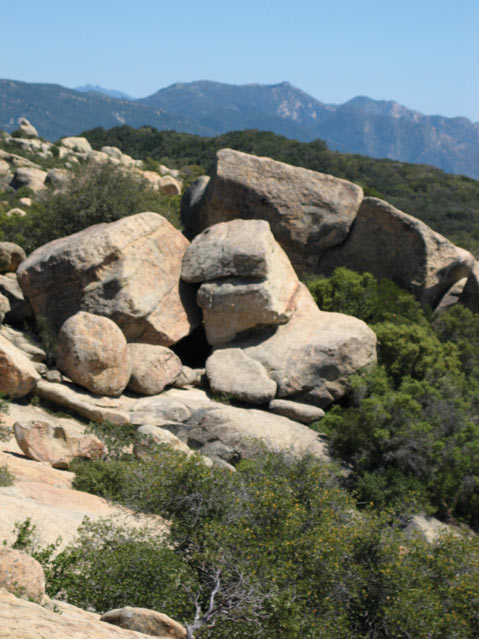
Another climbers’ hot spot in the 1990s was a house called “the Castle,” which had a nearly 600-square-foot indoor/outdoor climbing structure designed for training. It not only was a place to practice the sport, but it also acted as a flophouse for climbers traveling through Santa Barbara. At certain times, there might be several people staying in the house and maybe 10 camped in the backyard. This was a peak period of the sport, when many climbing routes in the hills were being established. When the Castle was no longer operable — residents moved on to other things — the climbing scene quieted down for the next 10 years.
Many well-know rock scalers have visited the Santa Barbara hills, including Chouinard, record speed climber Hans Florine, Bob Banks, Kevin Steele, Kevin Thaw, Phil Requist, John Perlin, Wills Young, and Andy Patterson. To them, Santa Barbara was a great place to train and enjoy the beauty of the city. Currently, a few groups of younger climbers have started showing interest in working on establishing new routes.
Where to Climb
The Santa Barbara climbing network is small and close-knit. Climbers often share gear, skills, and experience to enhance their passion for the sport. And although the area is not world-famous, it is considered a great place to explore because there are no crowds; at times you might be the only one on the rock face. Plus, there are great climbing areas only minutes from the center of town — the mountains are scattered with rock faces and boulders for the novice to advanced climber.
The Brickyard: Off Highway 154 on West Camino Cielo is the Brickyard and Lizard’s Mouth. This area has wonderful views of Santa Barbara and the Channel Islands. There are numerous sandstone rocks to climb and beautiful carved sandstone boulders to hike.
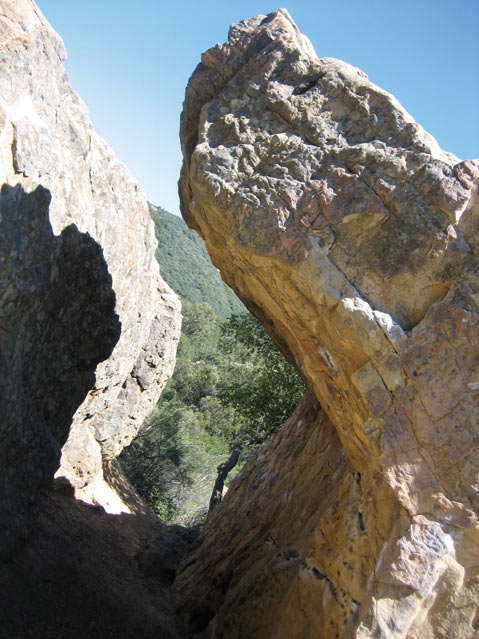
Painted Caves: The boulders at Painted Caves are incredible. Located down the road from the Chumash Painted Cave state historical site, the road up the mountain is narrow with incredible views of Santa Barbara.
Tangerine Falls: This is an incredible hike where the trail follows the creek with several small waterfalls until you reach 200-foot falls at the top. A trail on the west side leads to the top of the falls; the climbing area is to the right and is for the advanced climber. Located in the Montecito area just west of Cold Springs Canyon, the trail is shaded, with access to water the entire way.
Skofield Park: Located near the Santa Barbara Botanic Garden, the park follows the creek and is a great place to hike with your dog. Along the creek are multiple boulders to climb or relax on while enjoying the water flow. In the spring, there are wildflowers everywhere. However, the park is still recovering from the 2009 fire that devastated the area. Rattlesnake Canyon, a place off the beaten track and an opportunity for adventure, has some new developed rope climbing areas with a number of first descents up that canyon.
Gibraltar Rock: Located several miles up Gibraltar Road on the right side, the rock has an incredible position that offers a huge range in climbing for both pros and novices. Gibraltar Rock has a special appeal to many climbers and is where many like to start their big-wall climbing.
Seek out area field guidebooks for locations, safety precautions, guide services, and other info on the locations listed.
INDOOR GYMS: In addition to the opportunities out-of-doors, there are three indoor rock-climbing gyms in Santa Barbara County: Santa Barbara Rock Gym, UCSB Recreation Center, and Goleta Valley Athletic Club.
GEAR: Rock-climbing gear can be found at REI and Mountain Air Sports.
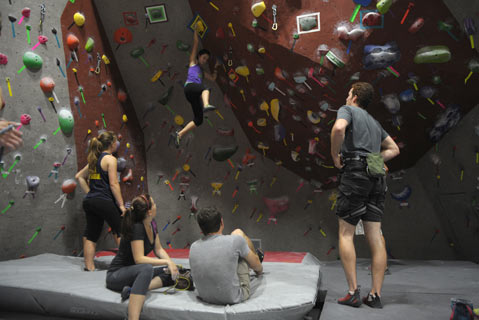
Learning to Climb
• The Adventure Program at the University of California, Santa Barbara, is a good place to learn how to rock climb. It is open to the public, with day passes available at the Recreation Center or free passes if you have a Recreation Center membership.
• Earthworks Climbing School (earthworksclimbing.com) provides rock-climbing adventures for the beginner or intermediate climber. Earthworks provides all the equipment and instruction for a climbing trip.
• Santa Barbara Adventure Company (sbadventureco.com) also offers both beginning and intermediate rock-climbing adventures. Instruction and gear are included, starting at $149 per adventure.



